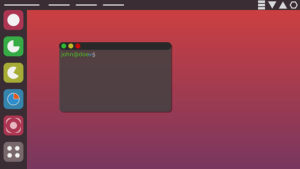,
,
,
What to do after installing Manjaro Linux?
Are you looking for the next steps after a fresh installation of Manjaro Linux? Here are some essential post-installation steps that I highly recommend for a smooth experience.
My personal recommendations for post installation tasks
These are the things that I personally like to do after setting up Manjaro. Of course, your preferences may vary based on your needs. But these steps should help you get started on the right foot.
How to do essential tasks after installing Manjaro Linux
If you want to make the most out of your Manjaro experience, follow these steps:
- Set the fastest mirror
- Update your system regularly
- Enable AUR, Snap or Flatpak support
- Enable TRIM (SSD only)
- Install a kernel of your choice (for advanced users)
- Install Microsoft true type fonts (if needed)
Before updating your system, it’s important to optimize your mirror list. By doing so, you can improve the performance of your Manjaro system while refreshing and downloading software from the repositories. To do this, open the Terminal emulator and type sudo pacman-mirrors –fasttrack.
Keeping your system up-to-date is crucial for security reasons and to ensure a smooth experience. Before installing new software, it’s recommended to refresh your system repository by running sudo pacman -Syu in the Terminal.
The Arch User Repository (AUR) is one of the main reasons why users choose Arch-based systems. It provides access to a vast number of additional software. Optionally, you may also enable support for Snaps and Flatpaks directly from the Pamac GUI package manager.
If you have installed Manjaro on an SSD, it’s important to enable TRIM to clean blocks and extend the lifespan of your SSD. You can do this by running sudo systemctl enable fstrim.timer in the Terminal.
One of the highlights of my Manjaro Linux review was the ease with which users can switch kernels through a graphical interface. But if you prefer the command line, you can list the installed kernels and install a new one by using mhwd-kernel -li and sudo mhwd-kernel -i linux58, respectively.
If you need to edit work documents on your personal computer, you may need fonts like Times New Roman or Arial. These fonts can be found in the AUR, and you can install them using an AUR helper if you prefer using the command line for AUR packages.
In conclusion
Manjaro is a fantastic distribution that offers the advantages of Arch Linux in a pre-configured, desktop-optimized package. While it comes with many essentials pre-installed, there are a few steps that you may have to do yourself, depending on your setup and needs.
What are your essential steps after installing Manjaro Linux?
Please let me know in the comments below what other tasks you consider essential after installing Manjaro so that we can learn from each other and improve our experience even further.









